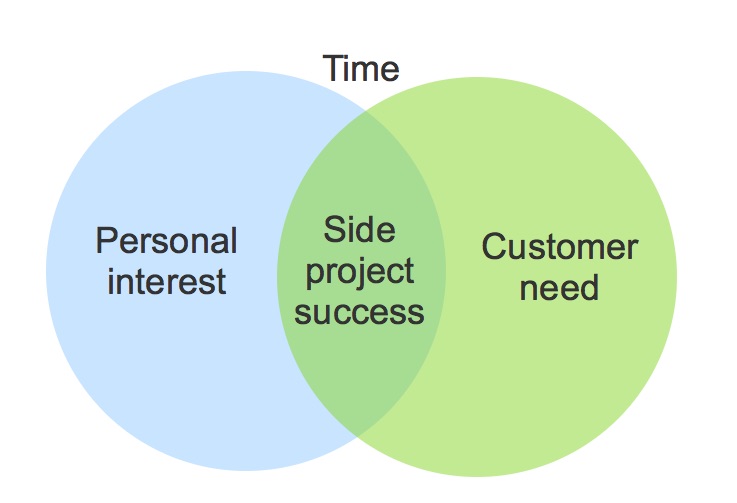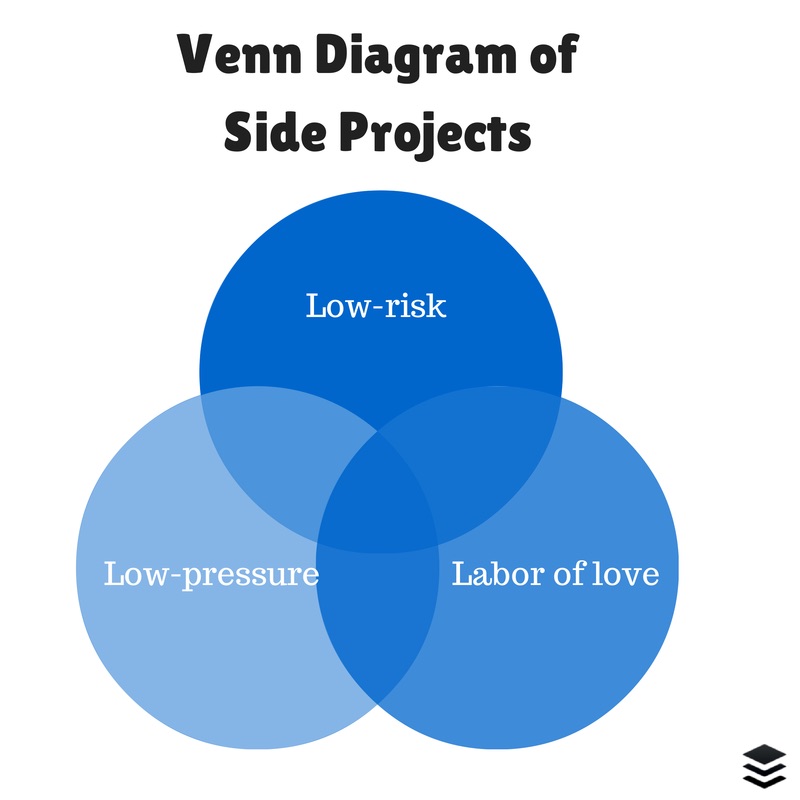4,148 words ~ 13 min read
To quit or not to quit your job

Don’t quit your job yet: how to lay the foundation for a successful startup
Humans are wired to love a good before-and-after story.
We crave transformation, whether it’s fixing up an old house or turning a clever idea into a thriving business.
But pushing for that “after” state can lead us to overlook all the fun of getting started.
Sure, the early days of building a product or a business can be tough. There are late nights, financial struggles, mistakes, and self-doubt.
Yet, it’s also a great time to explore. You can experiment without millions of paying customers watching your every move.
And if you don’t have investors breathing down your neck, you can afford to play the long game.
It took 15 years to reach +10 million users, but I wouldn’t change anything. I’ve enjoyed the entire process — and I couldn’t have succeeded without embracing the freedom and learning of those early days.
But, how do you get started, especially if you’re not ready to quit your job?
You can begin, right now, to build a foundation that will support your business for years. Even if you’re not a software engineer (or you don’t have an MBA), there are smart ways to get the ball rolling.
Create a path for your product idea
Today’s startup media often celebrates the blind leap, but I believe in scoping out the terrain before you jump.
After college, I spent five years working as a programmer for a New York media company. That’s where I got the idea for Jotform.
But long before I wrote my resignation letter, I started taking small steps toward my goal. I prepared the soil.
Maybe you have a killer product or startup idea, but you’re not ready to go all-in. Or maybe you’re starting to tinker in your off-duty hours.
Either way, here are six steps you can take to deepen your knowledge, build a platform, and dramatically increase your chances of success.
1. Don’t quit your day job
Startup culture has made the term “day job” feel like a four-letter word, but I think that’s misguided, not to mention discouraging for millions of awesome employees.
The five years I spent working at the media company were invaluable. Not only did I gain so many important (and directly applicable) skills, but I also discovered how to stay productive and communicate well.
I watched how my mentors accomplished their goals, which helped me immensely when I was suddenly adrift, without a schedule or a boss looking over my shoulder.

Even negative experiences were valuable.
For example, I saw co-workers struggle with old computers and slow connections. That seemed like wasted potential.
I also realized that most people work better when they have some flexibility.
Few product people — especially developers and other creatives, like designers — thrive in a heavily prescriptive environment. I know I certainly don’t.
Many of these lessons translated directly into Jotform — and they still influence how our team operates today.
Never underestimate what you can learn and accomplish in a 9-to-5 position.
It can be so much more than a paycheck; the time you give to another company can teach you how to work effectively, spark new project ideas, and give you confidence to tackle that big startup idea.
2. Start a side project or two
Most people don’t bake a pie or make pasta from scratch before they can boil water. Side projects build your skills and allow you to sample new ideas.
Before I jumped ship and started my company, I worked on a series of side projects. I built small test products. I explored tangents and indulged my curiosity.
That’s also where I applied what I had absorbed from devouring all those books, blogs and articles.
Every time I embarked on a new project, I learned something essential about marketing, usability, product development, sales and customer support.
And here’s the other great thing about side projects: sometimes they succeed.
Many of my little projects faded away, but some sold well. In fact, a couple began earning enough money to match my full-time salary.
Those experiments gave me the safety net I needed to eventually quit my job. That also meant I didn’t need to ask friends, family or VCs to invest.
Many people talk a big game about their side projects, but I encourage you to actually do them.
Test your ideas. Play a little and see where they go. Try not to put too much pressure on yourself or your creativity, but give it a good shot.
A successful project could fund and launch your business. A less-than-amazing result will also be an invaluable teacher. It’s a win-win.
3. Share your work
I used to have a blog where I wrote about online technologies and my own side projects.
Whether your 2018 version of this platform is a Medium blog, a YouTube channel, a podcast or an amazing Instagram account, sharing your work is wildly beneficial for three reasons:
- Sharing can help you to build an audience before you build your startup. Then, you can leverage that following when you launch a product. That’s how I started to sell my side projects. It’s also how I funded the six months I spent working full-time to build Jotform. I realize the internet is a lot more crowded these days, and it doesn’t happen overnight, but consistently providing valuable content will attract the right people over time.
- It’s a great way to clarify and improve your ideas. If you want to learn something, try explaining it to someone else. You’ll immediately see the gaps in your knowledge. You’ll get smarter and people will begin to find value in your content.
- You establish a track record. Once you have something to launch, that audience already knows who you are and trusts your voice. They see that you’ve been covering the industry and maybe even showing your process along the way. Think about a ProductHunt post. If someone clicks through and sees a half-finished side project, without a blog or an online history of any kind, it doesn’t exactly build confidence in in the creators.
4. Learn from the experts
Never before have so many expert resources been right at our fingertips.
From online courses to workshops to blogs and videos, you can learn nearly anything, at any time, from smart, accomplished people. The internet is your educational oyster.
While I was still working full-time, I read everything I could find about building a successful software business.

Joel Spolsky and Paul Graham became my virtual mentors. They had created admirable companies and were sharing tactical advice on their blogs.
I also read books about startups and bootstrapping. I was voracious. Most importantly, I tried to immediately apply what I learned.
I think that’s the only way to ensure the lessons really stick. Otherwise, it’s like going to class without taking a test or writing a paper. You need to see if and how certain tactics actually work for you.
5. Stay on top of emerging technologies
Maybe you’re thinking, “well, yeah. I already do that.”
But there’s following tech trends and there’s following your instincts. Success requires you to do both.
For example, Google introduced Gmail in 2004. I was psyched when I first saw it. Single-page web apps felt like a bold step forward. JavaScript libraries and drag-and-drop functionality were also new on the scene.
It was an exciting time for the internet.
On developer forums, however, many people were laughing about web apps. Lots of experts weighed in, too. They said there was no way a web app could be as effective as a desktop app.
I thought these were powerful, new technologies, and I wanted to use them.
Clearly, I wasn’t the only person who felt this way. Lots of other founders saw their potential, and those of us who embraced these innovations (like using drag-and-drop to build web forms) got a head start on the industry.
6. Prioritize design and usability
Software has to be user friendly. This might seem like another “duh” statement, but stay with me.
Most developers and software engineers focus on code. They want to make a working product with lots of features.
But think for a moment about the disconnect. Users simply expect your product to work. That’s a given. Deliver something broken and they’re gone before you can blink.
If they’re choosing between two options, though, they’ll pick the one that feels slick and intuitive. We all know this from personal experience, but it’s easy to lose perspective with your own product.

Joel Spolsky was one of the first people to hammer this point home for me, and I’ve never forgotten his lessons.
So, as you’re reading and learning and preparing to leap, keep a close eye on design and usability. Go deep into these critical topics. They’re difference-makers in the product world and beyond.
Here’s the bottom line:
Few successful products are launched out of the blue. If you want to be an entrepreneur, prepare yourself.
Create side projects. Try to sell them. Develop marketing and support for your experiments. Building is one part of the equation, but releasing it to real users is different beast entirely. It’s an amazing learning experience.
While you’re doing all this serious prep work, don’t forget to have fun. My two young kids play all day long, because that’s how they learn. It’s a safe way to discover how the world works.
We should all be following their lead, whenever possible.
Pursue ideas that genuinely excite you. Trust your instincts.
And learn how to become an entrepreneur by playing with side projects in a safe, low-pressure environment.
Read on to learn more about how to lay the foundation for a successful startup by launching side projects.
Build a side project, build an empire
Question: What do Craigslist and Albert Einstein have in common?
Answer: Their big idea started as a side project.
1905. Albert Einstein worked six days a week full-time in an office, examining patent applications. He dedicated all his remaining hours to studying and experimenting with physics. One day, the Theory Of Relativity was conceived — completely off-the-clock.
1993. Craig Newmark, employed at an investment company, started an email list in his spare time to allow him and his friends to update each other about different events in town. Eventually, the list grew so much that there wasn’t enough space in people’s inboxes: it was time for a website. Enter Craigslist.com.
2018. A small sideline has the potential to morph into something huge. With reliable internet access and enough devotion, a nugget of gold becomes a rainbow.
Many of the world’s most successful companies started as an afterthought in someone’s spare hours, while the ‘real work’ chugged on in the background.
Facebook, Twitter, Instagram, Uber, Product Hunt, Unsplash, Pinterest, GrowthHackers, Groupon, Trello, AppSumo, Etsy, Hubspot, Gmail, WeWork, Buffer… The list goes on and on.
Even Apple was born in a garage, not an office. College dropouts Steve Jobs and Steve Wozniak could only work on their DIY personal computers AFTER their 9–5 had finished.
Something brewing behind the scenes can turn into your life’s work.
The story of my startup followed a similar path.
I started building products as a hobby in college. While working full-time as a programmer, I patched together pockets of time to water and trim my fledgling products. It wasn’t until five years later that I quit my day job and went all-in.
Back then in my dorm room, I could never have predicted that one of my products, Jotform, would have +10 million users and +300 employees— without receiving a single dime of outside funding.

When a project first calls your name, who knows where it will take you?
It may inform or enrich your core business. It may transform your core business.
And sometimes, it will BECOME your core business.
There once was a multiplayer game called Glitch. Glitch was not a success. In fact, it was doing so badly that its founders decided to shut it down altogether.
On the cusp of despair, they contemplated the internal chat system they had been building for fun while developing the game. It was clunky, but functional.
With nothing to lose, they decided to launch the chat as a product in itself.
Slack was born — and it became the fastest-growing business app in history.
If you’ve got a side project that beckons, what’s stopping you?
Side projects increase creativity
A buzzing side project will not take anything away from your business. It will energize it.
After Google launched its 20 percent rule (employees are encouraged to spend 20% of their time exploring side projects), the result was that the remaining 80% became more productive.
Sometimes, they can even land you your dream job.

Running a business inevitably generates pressure and anxiety. People need to be paid. You need to perform. There is pressure to succeed.
Not so with your side project. It isn’t keeping you afloat; if it fails, no one will drown.
It’s a pressure-free playing field.
And pressure-free playing fields are where the magic happens.
Even the giants can’t resist toying with sidelines that can seem improbable. Disney is dabbling in robot creation; Tesla is starting an energy company; Amazon is getting into groceries.
Ready to play? Here are a few must-knows — especially if you harbour hopes of your baby project growing into an adolescent startup, or even a grown-up business.
Find the time
Scratch that. You will never ‘find’ the time. Long uninterrupted hours in which you can devote yourself to your heart’s content to a side project don’t exist.
Nor do you need them. Side projects grow in small but frequent windows that barely make a dent in your day but add up over weeks and months.
Take me as an example. I didn’t let full-time work stop me from improving Jotform; I’d wake up everyday at 6am, answer customer questions, then head off to my ‘real job’.
Everyone has leftover minutes in their day.
Secure those pockets of time. Protect them in the way you protect other things that you prioritize. Don’t double-book them in your diary. Put a ‘do-not-disturb’ sign on your door.
At the same time, don’t put too much pressure on yourself in terms of setting deadlines. This is the area of your life to be expansive, not restrictive.

Kevan Lee of Buffer knows side projects march to a different beat than 9-to-5 work. They target a separate part of the brain and therefore follow their own rules. His #1 rule? Be ok with missing deadlines.
Just go and hang out with your project. Make it like date night.
Finding the need: deliver extreme value
Finding a pain point to soothe, an unmet need or an unfilled gap doesn’t have to be something complex or fancy.
A quick glance at ‘The 1,000 Upvote Club’ on Product Hunt shows that the most-appreciated ideas are often neither of those things.
Remember the side project advocate Crew? Their story seemed like a textbook startup nightmare, until their side project, Unsplash, turned it into a dream-come-true.
Their dedicated ‘Labs’ page offers ‘tools for the creative community’. It shows the company asked itself that vital question:
What can we give something valuable away in order to sell something related?
Your starting point? Putting yourself in your customers’ shoes.
What makes their journey less than smooth? What gets in the way, or what takes too much time? What is still too complicated?
We’re not talking about a key part of your core business. We’re assuming that that’s in place.
We’re talking about a generous extra to surprise and delight. A free gift to your customer that emerges from the independent pursuit of an idea.
Make it fun
A project that isn’t loved will face-plant quickly. That’s because you’ll find lots of reasons not to spend time on it (and there are always reasons). That, in turn, will make your project wilt.
Droopy projects aren’t fun. You will become demotivated and resentful of the time you do spend on it.

In fact, side projects should always be “stupid”, says former Spotify designer and side project champion Tobias van Schneider:
“The only way a side project will work is if people give themselves permission to think simple, to change their minds, to fail — basically, to not take them too seriously. When you treat something like it’s stupid, you have fun with it, you don’t put too much structure around it. You can enjoy different types of success.”
So make it something that you’re into. Because, for the time being, the enjoyment and satisfaction that you get out of your project will be your only reward.
Or, as Hiut Denim Co puts it:
“A side project is a Labor of Love. You provide the ‘Labor’. And you provide the ‘Love’. So when you spend time on it, it is because you really want to. That keeps you coming back and pushing it on.”
Relax with imperfection
So you’ve showed up (and keep showing up). And it’s fun. But it feels messy. You don’t know where it’s going. Some aspects feel plain wrong.
That’s just right for a side project.
The rest of your life may be about meeting goals, targets and expectations. This part isn’t. It’s your time to play, tinker, try things out, and wander down paths that don’t have a clear destination.
Wanting to get somewhere in as little time as possible is the surest way to kill off inspiration of any kind.
The best way to approach a side project is as an experiment, rather than something with a clear-cut goal.
Paul Jarvis, creative entrepreneur and author of ‘Company of One’, explains:
“Experiments don’t “fail” — they simply prove or disprove a hypothesis. So focus on the task at hand. Not the end result.”
If you are a bootstrapped startup like Jotform that is profitable, you have the freedom to experiment with abandon.
With no investors breathing down our neck, we can take as many fun risks as we please — and we do.
It’s great to dream big. But becoming hyper-focused on the results and success of your side project can end in paralysis — and bitter resentment when things don’t go to plan.
Because when it comes to side projects, things usually don’t go to plan. That’s what makes them so exciting.
So go in without expectations and see what happens.
Something always does.
P.S
Don’t be scared to invest time and effort into something that truly makes you tick. It won’t distract you or tire you out; it will energize you.
Worst case scenario, you sate your curiosity.
Best case scenario, you discover your life’s work.
But either way, don’t worry too much.
After all, it’s only a side project.
And before deciding to quit your job to jump on your venture full-time, make sure you weigh the pros and cons of both entrepreneurship and “employee-ship” well. Let me explain:
A candid conversation about entrepreneurship vs. “employee-ship”
Sarah has worked at Guardian Technologies for nearly a decade now. She started out her career at the company as an entry-level sales associate and has since worked her way up to a sales executive.
She makes well over $100,000 a year, loves her team, her company and her life as a whole.
When her more entrepreneurial friends poke fun at her for being a “nine-to-fiver” or “not dreaming big enough” she doesn’t mind. In fact, she finds it amusing.
She deeply respects her friend’s drive to build the next Apple or Facebook… but she couldn’t be happier with her job and her life.
She gets nights and weekends off as she watches her friends spend most of their “free time” working.
During her late twenties, she has been able to cross countless destinations off her travel bucket list with a hefty 4-weeks worth of vacation each year, while her friends have been locked up in their apartments building and rebuilding and then rebuilding some more after that.
Not to mention… when she hits her bonuses… she makes more than them combined. But, who is counting?
Let’s have a candid conversation about entrepreneurship vs. “employee-ship”.
I want to begin by saying the dream to become an entrepreneur isn’t a silly one… not in the least.
After all, I chose that path for myself and that decision has allowed me to build Jotform… and it has given me the chance to work with a team of incredible people… a team of incredible employees.
However, I would be remiss if I didn’t say the dream to become an “employee” isn’t a silly one either. In fact, there is a great deal of me that would argue it’s a better one for some people.
- Help build an already established company (vs. lose sleep over thinking of all the entrepreneurial risks you took)?
- Earn a hefty salary (vs. worry how on earth you’ll be able take care of your family for the rest of your life)?
- Have the chance to one day move up the ranks (vs. embrace a completely uncertain future)?
- Enjoy paid time off and other benefits (vs. burn yourself out in a culture that celebrates the 80-hour hustle)?
Where do I sign up?
Unfortunately, in the twenty-first century, “employee-ship” seemed to have gotten a bad rap, all of a sudden being a “9–5'er” became uncool… that aspiring to work for a company versus build one of your own somehow makes you small-minded, unmotivated or a follower. I totally disagree.
The story about Sarah above (her name and the companies name have been changed for privacy purposes) highlights some of the benefits employees get to enjoy that most entrepreneurs don’t… until they “make it” (or if they ever make it).
While I’m not naive to think that Sarah’s experience is every employee’s experience, hitting a home run and selling your company for a billion dollars isn’t every entrepreneur’s experience either — just a select few unicorns like Instagram.
We need to talk more about the real cost of entrepreneurship and our worrying “Hustle until the haters ask if you’re hiring” mentality.
Entrepreneurship doesn’t always lead to happiness, flexibility, wealth and notoriety.

“I’ll be happy when”… is a thought that has ironically caused much unhappiness for men and women chasing anything in this world.
We find ourselves running after something — marriage, kids, a bigger house, a nicer car — and when we finally catch the thing we’re chasing, we find ourselves still feeling a bit empty.
In psychology, this concept is called “focusing illusion”, it’s a cognitive bias where people place too much emphasis on a future event and as a result inaccurately predict the reality of the event.
Think about a time you’ve told yourself a story about a goal or dream you were going after and in your head it looked like a fairy tale… but once you actually achieved the goal or dream the reality was far less epic.
That’s focusing illusion.
Many aspiring entrepreneurs suffer from such a psychological phenomenon. They tell themselves stories of what life as an entrepreneur will be like… but once they actually live the life of an entrepreneur they discover the reality is anything but.
Often times, these stories come in the form of “I’ll be happy when…”
I’ll be happy when… I start a business.
I will be happy when… I am making $100,000 a year from my business.
I will be happy when… I sell my business and become a milllionaire.
I will be happy when… [fill in the blank].
One story aspiring entrepreneurs tell themselves is that they will be happy when they find some of the many myths associated with entrepreneurship — flexibility, wealth, notoriety, etc.
But, from my own experience as an entrepreneur, these illusions aren’t discovered or achieved through entrepreneurship:
- I will be happy when I have more Flexibility as an entrepreneur — my life hasn’t become more flexible after building Jotform (and it wasn’t anything close to flexible during the first ten or so years while building it). After 15 years, my responsibility today is only bigger… managing, hiring, strategizing and worrying. If, as an entrepreneur, you’re working 40 hours a week and “worrying” an additional 40 hours outside of work… is your life truly flexible?
- I will be happy when I have greater Wealth as an entrepreneur — while Jotform has been a modest success for myself and my team, for every modest entrepreneurial success, there are thousands of failures. And, regardless of the Cinderella stories you hear in the media, the reality of entrepreneurial failure is anything but a fairy tale. There’s nothing poetic about going tens of thousands of dollars in debt because your dream didn’t take off. Where it concerns entrepreneurship, I would argue that wealth isn’t something that should be expected… I’d argue it’s a rare exception. In fact, according to a recent study, the average entrepreneur makes roughly $5/ hour starting out and established entrepreneurs make $62/ hour. Yes, that’s good money, but far from being a millionaire.
- I will be happy when I have more Notoriety as an entrepreneur — another misconception of entrepreneurship is that it leads to notoriety or fame. While yes, some entrepreneurs like Musk and Zuckerberg are celebrated like rock stars, most of us go completely unnoticed. Instead of trying to make it to a magazine cover, I choose picking olives and spending quality time with my family.
So, when you truly look at flexibility, wealth and notoriety… you realize that entrepreneurship isn’t necessarily the best path to take to achieve these things.
Entrepreneurship isn’t for everyone. Just because it’s cool or you are born to become an entrepreneur doesn’t mean your friends should become one.
If you want more flexibility, you might as well work for a remote-friendly company. If you seek wealth, you might as well make money working in real estate, sales or investment banking.
While there’s nothing wrong with these things, they can’t necessarily be found through entrepreneurship… or at least it’s not the easiest path to find them.